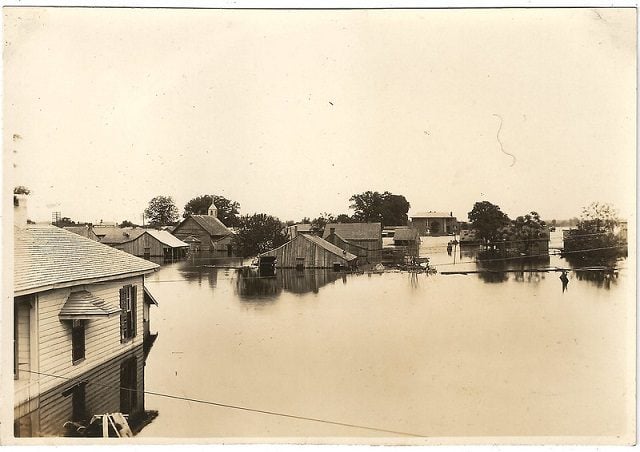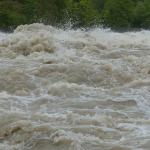+ Striking Analogies Between the Biblical Flood and the Great Mississippi Flood of 1927

Atheist anti-theist Jonathan M. S. Pearce is the main writer on the blog, A Tippling Philosopher. His “About” page states: “Pearce is a philosopher, author, blogger, public speaker and teacher from Hampshire in the UK. He specialises in philosophy of religion, but likes to turn his hand to science, psychology, politics and anything involved in investigating reality.” His words will be in blue.
*****
First Jonathan wrote a blog article saying that a universal Flood model was ridiculous, but a local Flood model was equally so. No rational person could believe in either, etc. I started replying on his blog, underneath the posting:
See also for much necessary preliminary info.:
Local Flood & Atheist Ignorance of Christian Thought
Are you serious? Your “paper” is really stretching credibility beyond…the outer reaches of sanity. Essentially, it boils down to “god did a miracle”. Well, if that’s the case, let’s stop presenting natural evidence.
Consider the Great Mississippi Flood of 1927:
The Great Mississippi Flood of 1927 was the most destructive river flood in the history of the United States, with 27,000 square miles (70,000 km) inundated in depths of up to 30 feet (9 m) over the course of several months in early 1927. . . .
Flooding began due to heavy rainfall in summer 1926 across the river’s central basin. By September, the Mississippi’s tributaries in Kansas and Iowa were swollen to capacity. On Christmas Day of 1926, the Cumberland River at Nashville, Tennessee, exceeded 56.2 ft (17.1 m), the second-highest recorded level (a destructive flood in 1793 had produced the record level – 58.5 ft (17.8 m). . . .
The flood affected Missouri, Illinois, Kansas, Tennessee, Kentucky, Arkansas, Louisiana, Mississippi, Oklahoma, and Texas. Arkansas was hardest hit, with 14% of its territory covered by floodwaters extending from the Mississippi and Arkansas deltas. By May 1927, the Mississippi River below Memphis, Tennessee, reached a width of 80 miles (130 km). . . .
By August 1927, the flood subsided. [note that this is a year after it started] . . . (Wikipedia)
Another article on the same event observed:
Ninety years ago, the Mississippi and Atchafalaya rivers — swollen from months of rainfall — burst through levees, sending muddy water into businesses, homes and farmland across Louisiana.
Families and farm animals sought refuge on rooftops, raised railroad beds and levees. Thousands were left homeless for weeks, even months. . . .
As heavy rainfall in 1926 continued into the spring of 1927, the Mississippi River began cresting in places like Cairo, Illinois, sending tons of water rushing south to Arkansas, Louisiana and Mississippi.
Note that the rainfall began in August 1926 and lasted till April 1927: that’s eight months or more than 240 days: six times the length of the 40-day rains in Noah’s Flood (Gen 7:4, 12). The entire Genesis Flood, up until the waters dried up, lasted 10 1/2 months (cf. Gen 7:11 and 8:13). No problem. The waters in the Great Mississippi Flood of 1927 took even longer to dry up: an entire year.
A 2001 National Geographic article noted the size of this flood:
A period of heavy rain for several months eventually led to the great flood . . . They [the rains] came down over several hundred thousand square miles, covering much or all of the states of Missouri, Illinois, Arkansas, Mississippi, Texas, and Louisiana. In New Orleans in 18 hours there were 15 inches of rain—the greatest ever known there.
Moreover, both areas are similar and analogous insofar as:
1) they are (in the costal areas) very flat,
2) lie near a large body of water (Gulf of Mexico / Persian Gulf),
3) have a large river or rivers running through them (Tigris & Euphrates / Mississippi).
4) probably have similar climates as well (without verifying it, but they are located virtually at the same latitude).
5) both have “rings” of mountains or much higher elevations around the flat basin and flood plain on three sides: in the US South there are mountains in Arkansas, Tennessee, and northern Alabama and Georgia.
So yeah; contrary to Jonathan’s bald statement: “No – not for that amount of time and over that area. There have not”: this one flood alone had:
1) sustained heavy rain for six times as long as the biblical flood,
2) flood waters remaining for a year, compared to 10 1/2 months in Genesis, and
3) coverage over an area larger than my proposed local Mesopotamian flood (likely twice as large or more).
And that’s just one flood. Certainly we can extrapolate from this data that there have been many more such floods in the entire history of the world. This one was within the previous hundred years. Both my parents were alive when it happened.
So, nice try. Jonathan provided unsubstantiated (and cynical / skeptical) words; I provide historical and scientific facts. We’re different that way. I like to stick to facts and reason and not mere wild subjective speculations and theories with little objective basis at all.
***













